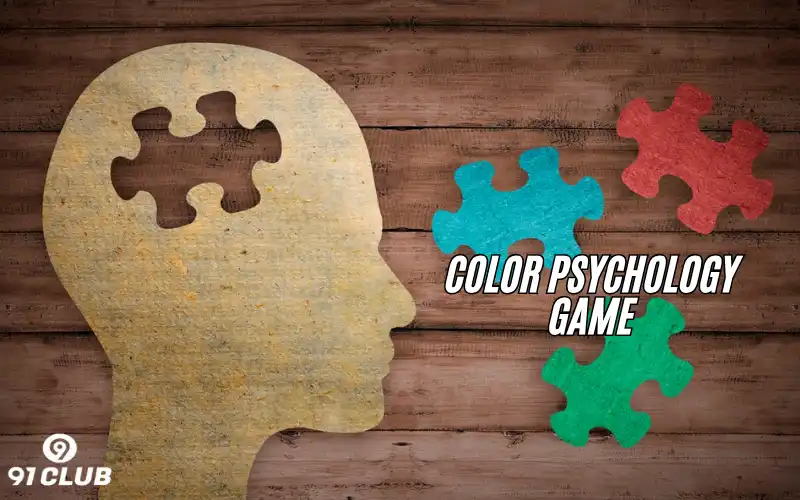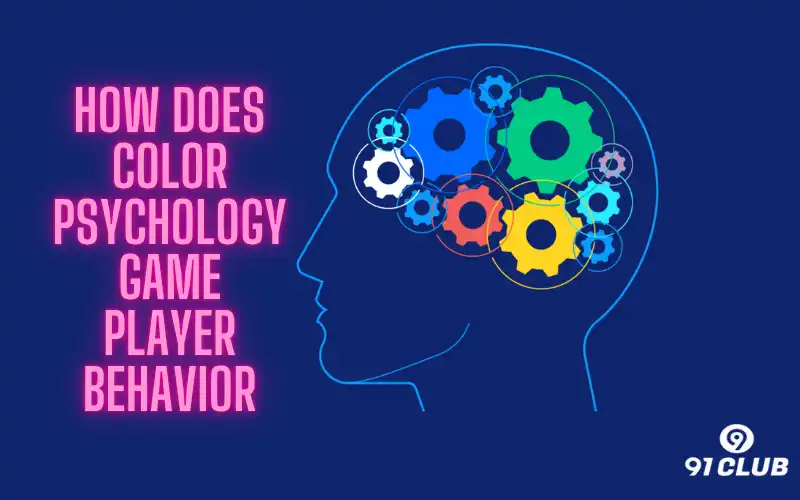Color Psychology Game is a fascinating field that explores how colors affect human emotions, behaviors, and decision-making processes. In the realm of gaming, 91 Club color plays a crucial role in shaping player experiences and influencing their behavior. From the design of game interfaces to the emotional responses elicited by specific colors, understanding color psychology can provide valuable insights for game developers and marketers alike. In this article, we will delve into how color psychology influences game player behavior and how it can be leveraged to enhance gaming experiences.
The Basics of Color Psychology Game
What is Color Psychology?
Color Psychology Game is the study of how colors impact human perception and behavior. Different colors can evoke various emotions and reactions, influencing how individuals feel and act in different situations. For example, warm colors like red and orange are often associated with excitement and energy, while cool colors like blue and green are linked to calmness and relaxation.
The Emotional Impact of Colors
Colors can evoke a wide range of emotions, Color Psychology Game and understanding these associations is essential for game developers. Here are some common emotional responses associated with specific colors:
- Red: Often associated with passion, excitement, and urgency. It can stimulate energy and increase heart rates, making it a popular choice for action-oriented games.
- Blue: Linked to calmness, trust, and stability. Blue can create a sense of tranquility, making it suitable for puzzle or strategy games that require focus and concentration.
- Green: Associated with nature, growth, and harmony. Green can evoke feelings of relaxation and balance, making it ideal for games that promote exploration and adventure.
- Yellow: Represents happiness, optimism, and creativity. Yellow can stimulate feelings of joy and enthusiasm, making it a great choice for casual and family-friendly games.
- Black: Often associated with mystery, power, and sophistication. Black can create a sense of intrigue and depth, making it suitable for darker-themed games.
The Role of Color in Game Design
User Interface (UI) Design
The user interface is a critical aspect of any game, as it directly impacts how players interact with the game. Color choices in UI design can influence player behavior in several ways:
- Navigation: Colors can guide players through the game by highlighting important elements, such as buttons, menus, and notifications. For example, Color Psychology Game using bright colors for call-to-action buttons can draw attention and encourage players to take specific actions.
- Readability: The contrast between text and background colors affects readability. High contrast colors make text easier to read, enhancing the overall user experience. For instance, dark text on a light background or vice versa can improve clarity.
- Emotional Engagement: The colors used in the UI can evoke specific emotions, influencing how players feel while playing. A well-designed color scheme can create an immersive experience that resonates with players on an emotional level.
Game Environment and Aesthetics
The colors used in the game environment also play a significant role in shaping player behavior. Here’s how:
- Setting the Mood: The color palette of a game can set the overall mood and tone. For example, a game with a vibrant and colorful environment may evoke feelings of joy and excitement, Color Psychology Game while a darker color scheme may create a sense of tension and suspense.
- Enhancing Gameplay: Colors can be used strategically to enhance gameplay mechanics. For instance, using specific colors to indicate different types of resources or enemies can help players quickly identify important elements and make informed decisions.
- Creating Immersion: A well-crafted color scheme can immerse players in the game world, Color Psychology Game making them feel more connected to the story and characters. This emotional connection can lead to increased engagement and longer play sessions.
Color Psychology and Player Behavior
Influence on Decision-Making
Color psychology can significantly influence players’ decision-making processes. Here are some ways colors impact player choices:
- Risk-Taking Behavior: Research has shown that certain colors can affect risk-taking behavior. For example, players exposed to red may be more likely to take risks, Color Psychology Game while those exposed to blue may be more cautious. Game developers can leverage this knowledge to design scenarios that encourage or discourage risk-taking based on the desired gameplay experience.
- Emotional Responses: Colors can evoke emotional responses that influence decision-making. For instance, a player feeling excited due to bright colors may be more inclined to engage in fast-paced gameplay, Color Psychology Game while a player feeling calm due to cooler colors may prefer strategic and thoughtful gameplay.
- Branding and Loyalty: Colors associated with a game or brand can influence player loyalty. Players may develop positive associations with specific colors, Color Psychology Game leading to increased engagement and a sense of belonging within the gaming community.
Impact on Player Engagement
Color psychology also plays a crucial role in player engagement. Here’s how:

- Attention-Grabbing: Bright and contrasting colors can capture players’ attention, drawing them into the game. This is particularly important in competitive gaming, where players need to quickly identify important elements on the screen.
- Emotional Connection: Colors that resonate with players can create a deeper emotional connection to the game. When players feel emotionally invested, they are more likely to engage with the game for longer periods and return for future play sessions.
- Feedback and Rewards: Colors can be used to provide feedback and rewards to players. For example, using green to indicate success or achievement can reinforce positive behavior and encourage players to continue playing.
Leveraging Color Psychology in Game Development
Choosing the Right Color Palette
When developing a game, choosing the right color palette is essential. Here are some tips for selecting colors that align with your game’s theme and objectives:
- Define Your Game’s Mood: Consider the emotions you want to evoke in players. Are you aiming for excitement, relaxation, or tension? Choose colors that align with your desired mood.
- Test Color Combinations: Experiment with different color combinations to find the most visually appealing and effective palette. A/B testing can help you determine which colors resonate best with your target audience.
- Consider Cultural Associations: Colors can have different meanings in different cultures. Be mindful of cultural associations when selecting colors for your game, especially if you have a global audience.
Implementing Color in Gameplay Mechanics
Incorporating color into gameplay mechanics can enhance the overall experience. Here are some strategies to consider:
- Color-Coded Elements: Use color coding to differentiate between various game elements, Color Psychology Game such as resources, enemies, or objectives. This approach can help players quickly identify important information and make strategic decisions.
- Dynamic Color Changes: Implement dynamic color changes based on player actions or game events. For example, changing the color of a character’s health bar to red when low on health can create a sense of urgency and encourage players to take action.
- Visual Feedback: Provide visual feedback through color changes when players achieve milestones or complete tasks. This positive reinforcement can enhance player satisfaction and motivation.
Conclusion
Color Psychology Game plays a vital role in shaping game player behavior, influencing everything from decision-making to emotional engagement. By understanding the emotional impact of colors and leveraging this knowledge in game design, developers can create immersive and engaging experiences that resonate with players.
As the gaming industry continues to evolve, Color Psychology Game the importance of color psychology will only grow. By incorporating thoughtful color choices into user interfaces, game environments, and gameplay mechanics, developers can enhance player experiences and foster deeper connections with their audiences. Whether you’re a game developer or a player, understanding the secrets of color psychology can unlock new dimensions of enjoyment and engagement in the world of gaming.





